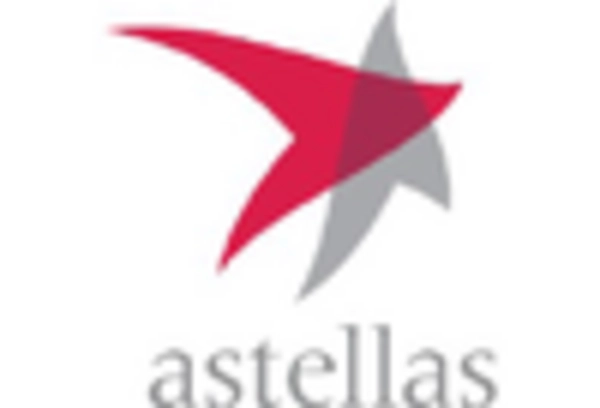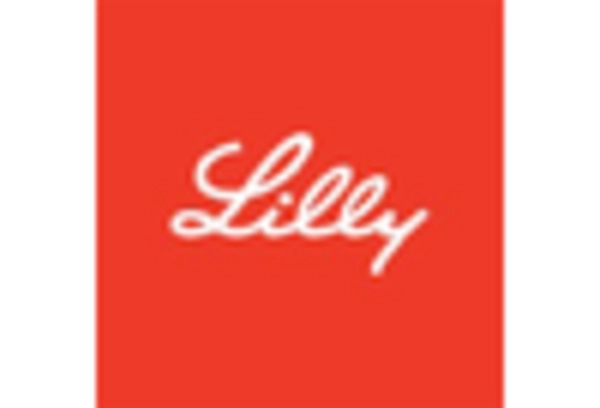Rising Healthcare Expenditure
The increasing healthcare expenditure in the UK is a significant driver for the overactive bladder-treatment market. With the National Health Service (NHS) allocating more funds towards urological health, there is a greater emphasis on addressing conditions like OAB. In recent years, healthcare spending has risen, with projections indicating an increase of approximately 4% annually. This financial commitment allows for improved access to treatments, including medications and surgical options, thereby enhancing patient care. Additionally, the focus on preventive healthcare measures may lead to earlier diagnosis and treatment of OAB, further stimulating market growth. As healthcare budgets expand, the overactive bladder-treatment market is likely to benefit from increased investment in research, development, and patient education initiatives.
Advancements in Pharmaceutical Treatments
Innovations in pharmaceutical treatments are significantly influencing the overactive bladder-treatment market. The introduction of new medications, such as anticholinergics and beta-3 adrenergic agonists, has expanded the therapeutic landscape for OAB. These advancements not only improve patient outcomes but also enhance adherence to treatment regimens. For instance, the recent approval of novel formulations that offer extended-release options may lead to better management of symptoms with fewer side effects. The market for these medications is projected to grow, with estimates suggesting a compound annual growth rate (CAGR) of around 5% over the next few years. This growth is indicative of the ongoing research and development efforts aimed at providing more effective and safer treatment options for patients suffering from OAB.
Increasing Prevalence of Overactive Bladder
The rising incidence of overactive bladder (OAB) in the UK is a primary driver for the overactive bladder-treatment market. Recent studies indicate that approximately 16% of the adult population experiences symptoms of OAB, which translates to millions of individuals seeking treatment. This growing prevalence is likely to increase demand for various therapeutic options, including medications and lifestyle interventions. As awareness of OAB symptoms expands, more patients are likely to seek medical advice, thereby propelling market growth. Furthermore, the aging population in the UK, which is projected to rise significantly, contributes to the increasing number of OAB cases. This demographic shift suggests a sustained demand for effective treatment solutions in the overactive bladder-treatment market, as older adults are more susceptible to urinary disorders.
Increased Focus on Patient Education and Support
The emphasis on patient education and support is becoming increasingly vital in the overactive bladder-treatment market. Healthcare providers are recognizing the importance of equipping patients with knowledge about OAB and its management. Educational initiatives, including workshops and informational resources, are being implemented to help patients understand their condition and treatment options. This focus on education is likely to enhance treatment adherence and improve overall patient outcomes. Furthermore, support groups and online communities are emerging, providing platforms for patients to share experiences and strategies for managing OAB. As patient engagement increases, the overactive bladder-treatment market may experience growth driven by a more informed patient population that actively participates in their care.
Growing Demand for Non-Invasive Treatment Options
The shift towards non-invasive treatment options is reshaping the overactive bladder-treatment market. Patients increasingly prefer therapies that minimize surgical interventions, leading to a rise in demand for non-invasive alternatives such as neuromodulation and behavioral therapies. This trend is particularly evident among younger patients who are more health-conscious and seek to avoid the risks associated with invasive procedures. The market for non-invasive treatments is expected to grow, with estimates suggesting a potential increase of 6% in the coming years. This growth reflects a broader societal trend towards patient-centered care, where individuals are empowered to make informed choices about their treatment options. As awareness of these alternatives spreads, the overactive bladder-treatment market is likely to see a corresponding rise in adoption rates.

















Leave a Comment